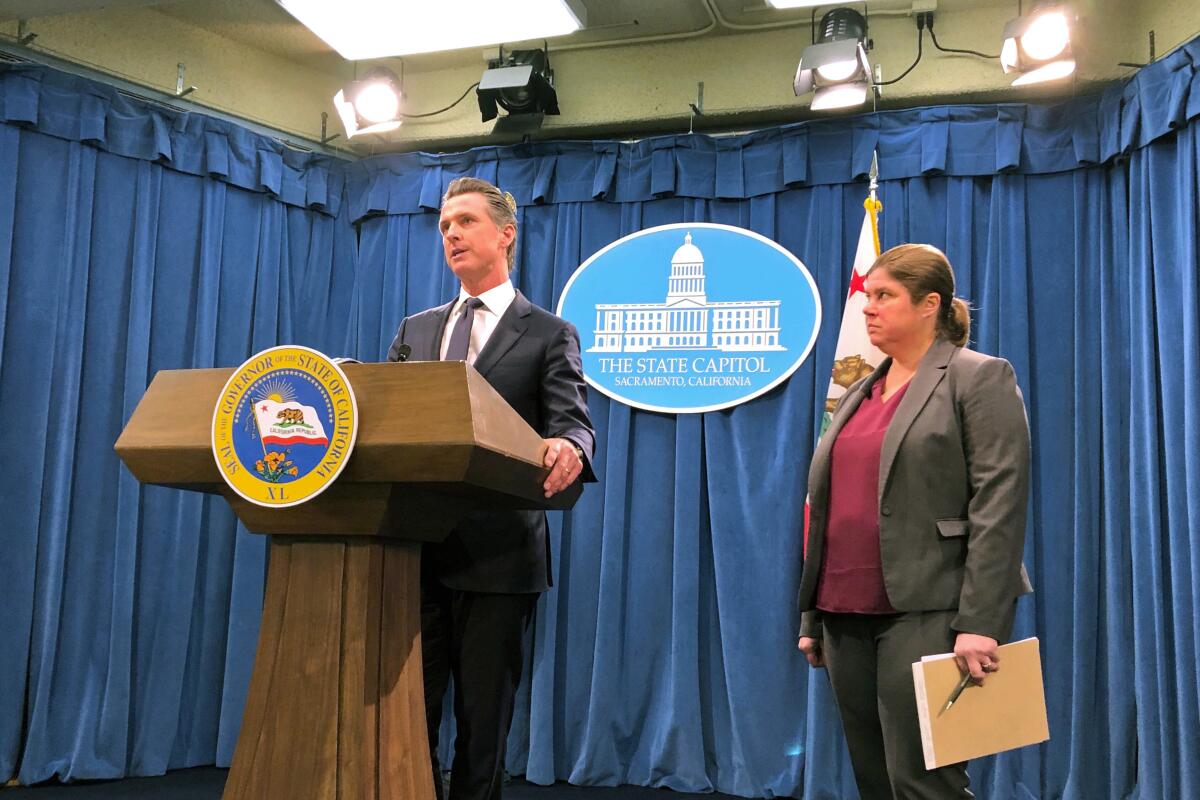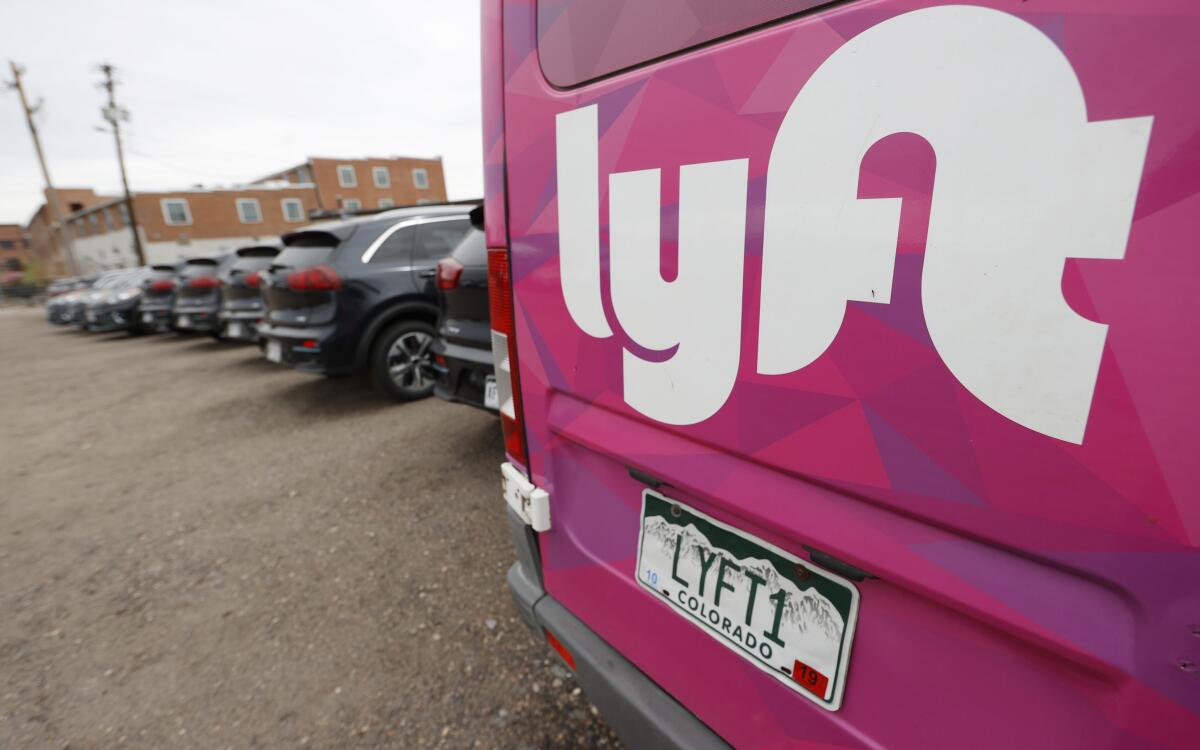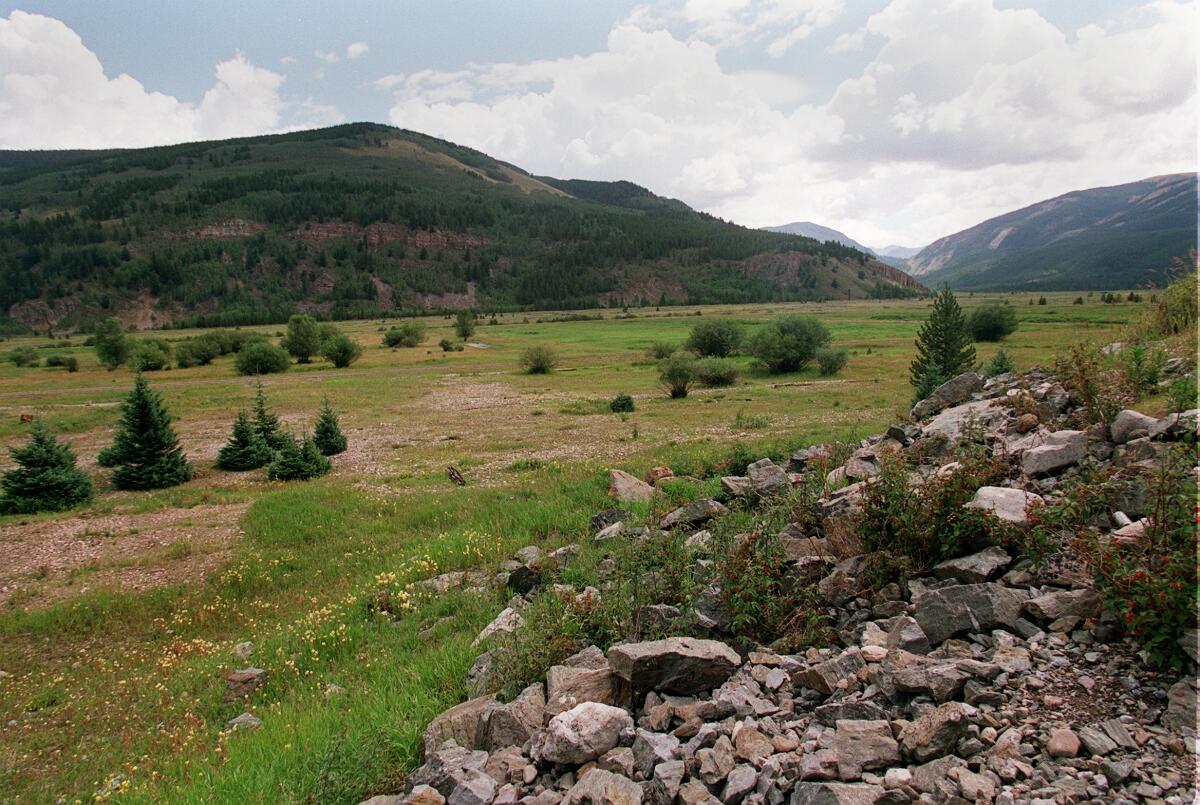How Proposition 30 could help California tackle climate change

This is the Oct. 13, 2022, edition of Boiling Point, a weekly newsletter about climate change and the environment in California and the American West. Sign up here to get it in your inbox.
If you’re registered to vote in California, you should be receiving your November ballot in the mail this week, if it hasn’t arrived already. One of the most important questions you’ll be asked to decide is Proposition 30 — a controversial ballot measure that could go a long way toward helping the Golden State meet its climate goals, according to a new report released Thursday.
More on the report in a minute. First, let’s get everyone up to speed.
Proposition 30 would raise taxes on the wealthy, to the tune of an estimated $3.5 billion to $5 billion in annual revenue. Eighty percent of the money would be used to subsidize electric cars and charging stations, with the rest going to wildfire safety.
My colleague Russ Mitchell has a rundown on the politics. The short version is that rich people and chambers of commerce don’t like Proposition 30 — and neither do teachers unions, which oppose setting aside so much tax money with none going to schools. Gov. Gavin Newsom calls the measure “corporate welfare” for Lyft, because all that tax money would help the ride-hailing company comply with a state mandate to switch to electric cars. Lyft has spent $45 million supporting Proposition 30.
Also opposing the ballot measure? Three timber companies, which collectively have spent more than $1 million trying to defeat it, according to this story by Politico’s Camille von Kaenel and Owen Tucker-Smith. The timber companies won’t say why. But there’s speculation they oppose the wildfire safety spending because they make so much money harvesting burned trees.
Supporters include the California Democratic Party; unions whose members would build electric-vehicle charging stations; and environmental and public health groups, including the American Lung Assn. and the Union of Concerned Scientists.
Many registered voters are favorable, too: A recent Los Angeles Times poll found 49% support for Proposition 30, with 37% opposed and 14% undecided. That tracks with a broader Times poll finding 55% of California voters support the state’s plan to ban the sale of new gas-fueled cars by 2035, with just 39% opposed. Overall, 36% of voters say the state isn’t moving fast enough to combat the climate crisis, compared with just 27% who say the state is moving too fast, Mitchell reports.
Proposition 30 could definitely speed things up. A new analysis from pro-clean-energy think tank RMI explains how.

RMI’s analysis, shared exclusively with The Times, finds the ballot measure would be especially good for low- and middle-income Californians — those least able to afford electric cars. New financial incentives could make electric vehicles as affordable as used gas cars, RMI found, helping more than 1 million non-rich Californians ditch oil by 2030. There would be enough money left over to install almost 95% of the charging stations California will need at apartment buildings and condos by 2030.
Proposition 30 could also fund more than 7,000 fast chargers — the public stations often found along highways that are supposed to charge your car in less than an hour. That’s about one-quarter of all the fast chargers we’ll need by 2030.
There’s guesswork in those numbers; RMI makes assumptions about how state agencies would spend the billions at their disposal. But Proposition 30 requires that at least half the transportation funds go to low-income or disadvantaged neighborhoods.
It’s important to understand how big a role cars and trucks play in fueling hotter heat waves, more extreme droughts and larger wildfires — not to mention deadly air pollution. Transportation accounts for roughly 40% of California’s planet-warming emissions. State officials expect we’ll need 8 million electric cars on the road by 2030, up from about 1 million today.
“The only way to do that is if everyone can benefit from cleaner, cheaper electric mobility,” said E.J. Klock-McCook, a principal with RMI’s carbon-free mobility team and one of the report’s authors. “It’s crucial to begin making the investments.”
California is already making those investments, with this year’s state budget setting aside billions of dollars for clean-car rebates, charging stations and other initiatives, much of it targeted toward low-income families. The federal climate bill signed by President Biden this summer includes a $7,500 tax credit for buying a new electric vehicle and a $4,000 credit for buying a used EV.
But climate advocates say it’s not enough — and RMI says its analysis supports that claim.
“The existing programs are small relative to the pool of funding that Prop. 30 makes available,” Klock-McCook told me.
Ana Matosantos disagrees.
Matosantos served until recently as Newsom’s highly influential Cabinet secretary, and she continues to advise the governor informally on Proposition 30. I asked her to review RMI’s analysis, and she described what she sees as several flaws.

First, she pointed out that state lawmakers allocated $10 billion to zero-emission vehicles over the last two budget cycles. RMI didn’t take some of that money into account in its analysis, and in fact assumed that no additional state funds are set aside for electric vehicles post-2024. That’s not realistic. California will definitely spend more money on clean cars.
Matosantos also said ride-hailing companies should find a way to comply with state regulations by shifting their business strategies rather than demanding support from taxpayers, even the wealthiest ones. She noted that Uber — which, unlike Lyft, has stayed out of the Proposition 30 battle — provides financial incentives for drivers to switch to electric cars.
“You see some other companies making more investments, looking at helping drivers,” she said.
Bigger picture, Matosantos believes this kind of proposition is the wrong way for California to make sweeping financial decisions. The clean energy transition, she said, will require huge amounts of additional funding — to bulk up the electric grid, for instance — and the Legislature is best suited to make those decisions, weighing all the competing priorities against one another.
“The place to answer these questions is when you’re looking at the state budget,” she said.
It’s also possible RMI is overstating the effect the ballot measure would have. The group’s report acknowledges some of the money it assumes would go to electric cars and charging stations could instead be spent on public transit, bike lanes or other projects to get people out of cars — which would be good for fighting climate change, just in a different way.
That said, RMI could be underestimating the effects too. Its report assumes a tax haul of $3 billion per year — well below the $5 billion the state Legislative Analyst’s Office ultimately estimated Proposition 30 could generate at the high end.
Either way, one reason so many climate advocates support Proposition 30 is the certainty that comes with a ballot measure. The state must continue supporting clean cars, Klock-McCook said — and Proposition 30 would guarantee it happens.
“We have to get going now,” he said, “or else we’re going to end up behind and really struggle to catch up.”

Proposition 30’s backers released their own report this week, paid for by the Lyft-funded campaign committee. Consulting firm E3 took a geographic approach, exploring which parts of the state stand to benefit most. The firm found the Los Angeles area would see 2.5 million additional charging stations over the next two decades, with almost three times as many chargers in disadvantaged communities compared with a business-as-usual scenario. The state as a whole would see 7.4 million additional chargers.
It’s worth noting that two major environmental groups — the Sierra Club and the Environmental Defense Fund — haven’t taken a position on Proposition 30. I was curious whether they agreed with the arguments made by Matosantos or other critics.
Brandon Dawson, director of Sierra Club California, told me his organization likes all the funding for electric cars. It’s the wildfire spending they’ve got questions about, because a portion of the money could go to forest-thinning projects that some Sierra Club members are worried would cause ecological harm while doing little to protect vulnerable towns from flames.
What about the Environmental Defense Fund, whose board of trustees is chaired by one of the top contributors to the anti-Proposition 30 campaign? EDF told me in an email this week that it “provided feedback” during the drafting of the proposition but typically doesn’t engage on ballot measures and decided to stay neutral.
“As for our board,” the group wrote, “members, of course, have the right to free expression.”
There are certainly hard questions here. Should Lyft use its own revenue to help its drivers buy clean cars, rather than seek public support? Do wealthy Californians pay high enough taxes already? Are ballot measures a good way to make policy?
I can’t answer those questions. But I can ask you to please remember to vote. Our collective future hangs in the balance.
On that note, here’s what else is happening around the West:
TOP STORIES

California is still failing to track heat-related deaths in real time, a year after a groundbreaking L.A. Times investigation into the death toll of extreme heat. Experts estimate last month’s heat wave resulted in 10 additional deaths a day in Los Angeles County, which tells you just how dangerous rising global temperatures are — and how important it is for the state to start treating this threat with urgency, as my colleague Hayley Smith writes. “We’re not respecting the most important natural disaster that we do get,” one expert told Smith. “We’re not really giving it the attention it deserves.”
Hurricane Ian is another reminder that climate change is making it basically impossible to live in some places — unless you’re wealthy and can afford to rebuild again and again. So write L.A. Times columnists Erika D. Smith and Anita Chabria, unpacking the harsh truth that rebuilding cities leveled by floods and fires is not always the best idea. See their previous reporting on Greenville, Calif., which burned in the Dixie fire. See also this piece by Jenny Jarvie, our Atlanta bureau chief, on Cape Coral, Fla., which has more than 90,000 properties at substantial risk of flooding — more than Los Angeles, Chicago, Houston or New York. Even as the ocean rises and hurricanes worsen, nobody is seriously considering managed retreat, Jarvie writes.
“They’re taking advantage of you, every single one of you, every single day. Hundreds of millions of dollars a week they’re putting in their pockets, lining their pockets at your expense, and then polluting this planet.” That’s Gov. Gavin Newsom, explaining why he’s called for a special session of the California Legislature to consider passing a new tax on oil company profits, as Phil Willon reports. Gas prices are finally dropping a bit, but they’re still super high — and Newsom says it’s “price gouging,” a charge the oil industry denies. For what it’s worth, experts have been warning for years that California is uniquely vulnerable to gas price shocks, Grace Toohey writes, with refinery outages possibly to blame for the recent pain at the pump.
POLITICAL CLIMATE

President Biden designated his first national monument Wednesday, protecting a World War II-era military training site along the Continental Divide in Colorado’s Rocky Mountains. Camp Hale — Continental Divide National Monument is nestled at 9,200 feet of elevation and includes historic buildings and wildlife habitat, as my colleague Eli Stokols reported ahead of the announcement. Biden also took steps to block new mining and oil and gas drilling on 225,000 acres of Colorado’s Thompson Divide, per Jesse Paul and David Krause at the Colorado Sun. At the same time, the Biden administration is moving forward with new oil and gas leasing mandated by the Inflation Reduction Act. Drilling rights on more than 260,000 acres of public lands in Wyoming, New Mexico and Kansas will be auctioned off next year, Wyoming Public Radio’s Caitlin Tan reports.
The California oil industry is trying to get a measure on the 2024 ballot that would reverse a recent law banning new drilling within 3,200 feet of homes and schools. Details here from Liza Gross at Inside Climate News. If the industry succeeds at getting a proposition on the ballot — the deadline to gather signatures is Dec. 15 — the buffer zone law wouldn’t take effect until voters get a chance to weigh in two years from now. Environmental justice activists who spent years pushing for the law’s passage are concerned, saying a two-year delay would result in more noxious fumes in their communities.
Two Montana laws designed to block the closure of a massive coal plant are unconstitutional, a federal judge has ruled. The Colstrip plant currently supplies electricity to customers in Washington, Oregon, Montana and other states, and the judge’s ruling should clear the way for the facility’s Pacific Northwest-based owners to divest from the facility by 2025, Tom Lutey writes for the Billings Gazette. That doesn’t guarantee the plant’s closure, but it raises the likelihood. In New Mexico, meanwhile, the city of Farmington is scrambling to find a way to save the San Juan coal plant, which closed last month, John R. Moses reports for the Farmington Daily Times.
AROUND THE WEST

California has finally produced the basic outlines of a plan to use less Colorado River water, although it’s not nearly as aggressive as federal officials say is necessary to stave off disaster. The Imperial Irrigation District — which supplies Colorado River water to Imperial Valley farmers — has agreed to reduce consumption by 250,000 acre-feet per year, as long as farmers are paid to take efficiency measures. And Southern California water leaders are prepared to implement mandatory conservation in cities, The Times’ Ian James reports. In a reminder of how important it is to confront our water challenges, a new study finds that this summer’s droughts around the world were made 20 times more likely by climate change.
Sagebrush rangeland once covered one-third of the continental United States. Now there are 115 million acres left — and we’re still losing 1.3 million every year, an area roughly the size of Grand Canyon National Park, according to a new report. Here’s the story from Sarah Trent at High Country News, who notes just a quarter of the loss is directly due to human activities such as cattle grazing and energy development, with the vast majority coming from ecosystem problems such as invasive grasses. “So far, it appears climate change has not been a primary factor in the ecosystem’s degradation,” Trent writes.
More than 19 million Americans, including many previously healthy young adults, are suffering from long COVID — and firefighters are at increased risk of getting it. In a scary reminder of why we should all still be taking COVID precautions, Miles W. Griffis writes for High Country News that COVID-19 was the leading cause of line-of-duty deaths in wildland firefighters last year. The people protecting us from flames face an especially high risk of getting the virus — and suffering long-term complications — because of factors such as the smoke they breathe and the lack of sanitation and privacy in their camps.
THE ENERGY TRANSITION
California’s power grid operator is again urging the Public Utilities Commission to get new clean energy capacity built fast, to make sure the state can keep the lights on as heat waves worsen and more people start driving electric cars. Even with the Diablo Canyon nuclear plant possibly staying online beyond a planned 2025 closing date, the utilities commission should still order new resources built, the California Independent System Operator says. Details here from Utility Dive’s Ethan Howland.
Will lithium finally bring revitalization to impoverished communities in California’s Imperial County? A lot has happened the last few months along the shores of the Salton Sea, and the Desert Sun’s Janet Wilson tracked those developments with a county supervisor, an environmental justice activist and a city official. She also wrote about one company’s claim that another mineral crucial to electric car batteries and energy storage systems, manganese, is also present in large quantities in the piping-hot brine it hopes to tap for lithium. In Idaho’s Salmon River Mountains, meanwhile, America’s first major cobalt mine just opened, according to Emily Jones at the Idaho Mountain Express. Yes, cobalt is another key ingredient in electric vehicle batteries.
A new Metro line just opened along Crenshaw Boulevard, the historic heart of L.A.’s Black middle class. It’s a big win for public transit, and it should help more Angelenos get out of cars — especially in a few years, when the line is extended to the airport. But already, the K Line has brought rising property values and financial pressure on longtime residents as investors swoop in, The Times’ Rachel Uranga reports. Her story is an important reminder that climate solutions can also cause gentrification.
ONE MORE THING

If you’re looking to take the train from L.A. to San Diego for Friday evening’s Dodgers-Padres playoff game, you’re out of luck. As my colleague Jack Harris points out, Amtrak is currently not running trains between the cities. A section of the tracks is shut down for emergency repairs, with Amtrak officials blaming continued coastal erosion — caused in part by climate change.
Yes, that means climate change is disrupting the Major League Baseball postseason, at least a little bit. If MLB and other sports leagues want to do their part to solve the problem, I wrote last year about how they might reduce their emissions.
We’ll be back in your inbox next week. If you enjoyed this newsletter, or previous ones, please consider forwarding it to your friends and colleagues. For more climate and environment news, follow me on Twitter @Sammy_Roth.
Toward a more sustainable California
Get Boiling Point, our newsletter exploring climate change, energy and the environment, and become part of the conversation — and the solution.
You may occasionally receive promotional content from the Los Angeles Times.




